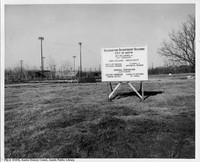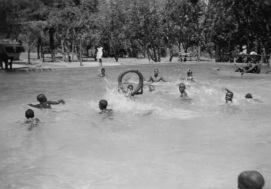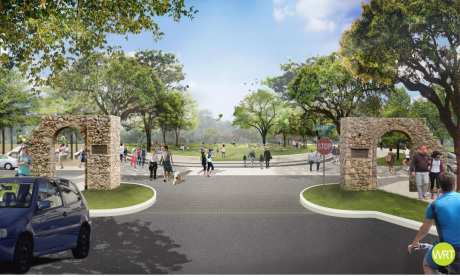From Division to department
The Parks and Recreation Department of a city typically strives to develop cultural and community hubs as well as preserve the natural environment that the city has taken over. In Austin, the department’s stated purpose is to “provide, protect and preserve a park system that promotes quality recreational, cultural and outdoor experiences for the Austin community.”[1] Their logo also sports the phrase, “Cultural Places, Natural Spaces.”
|
The land for Austin’s first park, Woolridge Park, was acquired in 1840, but didn’t legitimize as a public park until 1904. This park predated the majority of land acquisitions and park development that occurred throughout the early 20th century. Most of these new parks, though, could only be acquired as gifts from local donors because the city did the city did not approve any substantial funding for park development until the 1930s.
|
|
In 1928, the City’s Recreation Division was established, which eventually evolved into the Parks and Recreation department.[1] This early department was tasked with the organization of various recreation activities such as sporting leagues. However, the department quickly gained a wide variety of responsibilities as the city continued to acquire more park land, open space, cultural centers (i.e. museums), and community resources (i.e. pools). They even hosted their first public swim lessons in the 1930s.[1]
|
The Austin Parks and Recreation department also handles the maintenance of those parks that facilitate some of Austin’s most famous cultural festivals. Austin City Limits, for example, takes place on one of Austin’s oldest parks, Zilker Park. The department works hard to plan, develop, organize, and maintain these parks so that they can act as places for community development and cultural expression.
|
One project that the Parks and Rec department is currently working on is the Pease District Park. Pease Park has been in existence since the creation of the Recreation Division in 1928 and was originally designated as a white-only park (see page on African-American segregation).[3] This current Master Plan for this redevelopment project has recently been released and the city is looking for feedback from the public. According to the park’s website, hundreds of community members have been engaged in the process and are helping to improve plans for the park.[2] The current draft of the Pease District Park Master Plan contains plans for a new entrance (see Figure 3), bridges, landscaped areas, restroom, and various trails.
|
- Staff, Austin Parks and Recreation. Long Range Plan for Land, Facilities and Programs. Long Range Plan. Austin: Austin Parks and Recreation , 2011. PDF.
- "Pease District Park Master Plan." Austin Parks and Recreation. City of Austin, n.d. Web. 19 Aug. 2014. <http%3A%2F%2Faustintexas.gov%2Fdepartment%2Fpease-district-park-master-plan>.
- City Manager's Report. Rep. N.p.: City of Austin, 1928. Print. Recreation Division.
- City of Austin. [Future Site of the Recreation Department Building], Photograph; digital image, (http://texashistory.unt.edu/ark:/67531/metapth123883/ : accessed September 02, 2014), University of North Texas Libraries, The Portal to Texas History, http://texashistory.unt.edu; crediting Austin History Center, Austin Public Library, Austin, Texas.
- Ellison Photo Service. [Children swimming at Rosewood Park], Photograph, August 19, 1938; digital image, (http://texashistory.unt.edu/ark:/67531/metapth124743/ : accessed September 02, 2014), University of North Texas Libraries, The Portal to Texas History, http://texashistory.unt.edu; crediting Austin History Center, Austin Public Library, Austin, Texas.
- Rendering of new entrance for Pease District Park. Digital image. Austin Parks and Recreation. City of Austin, n.d. Web. 25 Aug. 2014. <http://austintexas.gov/department/pease-district-park-master-plan>.



